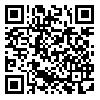Volume 9, Issue 4 (2020)
Naqshejahan 2020, 9(4): 323-334 |
Back to browse issues page
Download citation:
BibTeX | RIS | EndNote | Medlars | ProCite | Reference Manager | RefWorks
Send citation to:



BibTeX | RIS | EndNote | Medlars | ProCite | Reference Manager | RefWorks
Send citation to:
Ayatollahi Tabatabaei Z, ُSafavi S. The Impact of New Technologies on Quality of Lighting in the Historical and Cultural Areas (Case: Tehran, Si-e Tir Street). Naqshejahan 2020; 9 (4) :323-334
URL: http://bsnt.modares.ac.ir/article-2-36915-en.html
URL: http://bsnt.modares.ac.ir/article-2-36915-en.html
1- Urban Planning Department, Art Faculty, Tarbiat Modares University, Tehran, Iran
2- Urban Planning Department, Art Faculty, Tarbiat Modares University, Tehran, Iran , Sasafavi@modares.ac.ir
2- Urban Planning Department, Art Faculty, Tarbiat Modares University, Tehran, Iran , Sasafavi@modares.ac.ir
Abstract: (4074 Views)
Aims: Lighting cultural-historical areas is one of the factors enhancing nightlife identity and sense of place in cities. However, it should be noted that in any lighting scheme, the use of optimum light sources and the use of appropriate optical techniques can lead to higher quality, energy efficiency, tourist attraction and economic savings for the city. The purpose of the present study is to investigate the impact of modern technologies on the quality of lighting in historical and cultural areas. To achieve this goal, it is very helpful to achieve an optimal pattern of lighting using modern equipment.
Instruments & Methods: Firstly, using descriptive-analytical methods and library studies, lighting documents and successful internal and external experiences, important criteria for lighting cultural-historical areas have been extracted. These criteria are then prioritized and scored by experts. In addition, Dialux 4.13 software has been used to model the street lighting of Si-e Tir Street in Tehran, in order to measure the variables of light intensity and color temperature in different states. Finally, each of these modes was evaluated by Delphi method and in-depth interviews with experts.
Findings: The mode of use of LED lights with a color temperature of 4000K was chosen, so that the optimum brightness was higher than the background.
Conclusion: The software output also uses 250-watt mercury vapor lamps to illuminate the sidewalks and sidewalks of the street, mounted on 7-meter bases at a distance of 26 meters from each other and illuminated at a 5-degree angle to the street surface.
Instruments & Methods: Firstly, using descriptive-analytical methods and library studies, lighting documents and successful internal and external experiences, important criteria for lighting cultural-historical areas have been extracted. These criteria are then prioritized and scored by experts. In addition, Dialux 4.13 software has been used to model the street lighting of Si-e Tir Street in Tehran, in order to measure the variables of light intensity and color temperature in different states. Finally, each of these modes was evaluated by Delphi method and in-depth interviews with experts.
Findings: The mode of use of LED lights with a color temperature of 4000K was chosen, so that the optimum brightness was higher than the background.
Conclusion: The software output also uses 250-watt mercury vapor lamps to illuminate the sidewalks and sidewalks of the street, mounted on 7-meter bases at a distance of 26 meters from each other and illuminated at a 5-degree angle to the street surface.
Article Type: Original Research |
Subject:
Urban Design
Received: 2019/09/30 | Accepted: 2020/01/5 | Published: 2020/03/17
Received: 2019/09/30 | Accepted: 2020/01/5 | Published: 2020/03/17
Send email to the article author
| Rights and permissions | |
 |
This work is licensed under a Creative Commons Attribution-NonCommercial 4.0 International License. |








